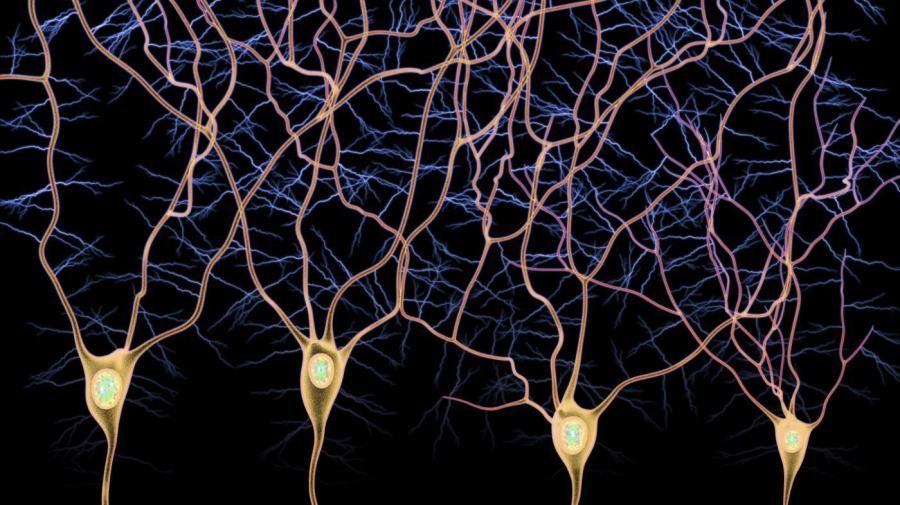What Is the Difference Between Afferent and Efferent Neurons?

Afferent neurons carry signals to the brain and spinal cord as sensory data, and efferent neurons send signals from the brain to the muscles, glands and organs of the body in response to sensory input.
What Are Neurons?
Within the body’s nervous system, which controls and communicates the body’s activities, the two main cell types are neuroglia and neurons. The latter is a specialized cell for functional purposes that may include responding to stimuli and transmitting messages around the body. Every neuron has a cell body, dendrites and an axon. Neurons are divided into three types: afferent neurons, efferent neurons and interneurons.
What Are Afferent Neurons?
Sensory information is carried from the body’s periphery to a main organ, such as the brain. The sensory information includes neural pulses, which include how things that people hear, touch, see, taste and smell are transmitted from the sensory organs. Afferent neurons are also called sensory neurons, and it is these specialized cells that convey the nerve impulses from around the body directly to the central nervous system.
Physical stimuli, such as sound or light, activate afferent neurons into converting the modalities into nerve impulses. They do this using sensory receptors found in their cell membranes. The main cell bodies of afferent neurons are located near the brain and spinal column, which combine to form the central nervous system.
What Are Efferent Neurons?
Efferent neurons’ cell bodies are located within the central nervous system and are also called motor neurons. Having received data from different neurons, which includes afferent neurons and interneurons, the efferent neurons take these signals from the central nervous system and transfer the nerve impulses to the peripheral nervous system, muscles and glands to initiate a response to stimulus.
How They Work Together
Afferent neurons usually have two axons, or terminals, that transmit electrochemical signals into the spinal column or the brain. Once there, the signal passes through a network of interneurons and through an efferent neuron. Afferent-efferent neuron pairs that travel through the spinal column govern reflexes, such as the knee-jerk response.
Afferent neurons are designed to respond to different stimuli. For example, an afferent neuron on a nerve ending designed to respond to heat detects excess heat and sends an impulse through the central nervous system. The efferent neuron then causes muscles to contract as a reflex to move the body away from the heat. Skin has sensory receptors for heat, cold, pleasure, pain and pressure, among others.
How They Differ
Afferent neurons have round and smooth cell bodies, while efferent neurons have satellite-shaped cell bodies. Afferent neurons are found in the peripheral nervous system, and efferent neurons are located in the central nervous system. The axons in afferent neurons move from the ganglia (a cluster of nerve cells that houses afferent and efferent neurons) to the spinal cord. A long axon is actually connected to an efferent neuron.
Afferent neurons have one long myelinated dendrite, whereas efferent neurons have shorter dendrites, and several of them. The dendrite in an afferent neuron is what is responsible for transferring nerve impulses from the receptors to the body of the cell, while in an efferent neuron the impulses pass through the dendrite and leave via a neuromuscular junction that is formed between the effectors and the axon.





